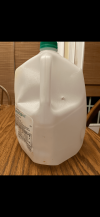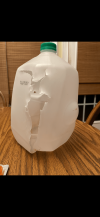Mike: Are you saying after mandral neck should not be more than 1/2 thou under bullet dia?
I'm suggesting that ideally, the pre-seating operation would be done with a mandrel at cal diameter.
The necks expanded with this would spring back inward ~1/2thou.
When you seat bullets into necks, that's just what you have if you were to pull the bullets and check. Right?
So why use bullets for a lot of up-sizing (beyond expansion/elastic limit)?
That [~1/2thou of springback force X area of seated bearing applied] is your tension(gripping force)(hoop tension).
Along that line Alex's comment about 3-4 thou neck undersize being not typically good makes me wonder if .> 004 is stretching brass so much its resulting in same final tension as .002 which was a good shooter?
There is no such thing as a tension of 2thou in necks. Springback is only ~1/2thou, as that's the elastic limit of cartridge brass.
There is whatever
interference you set, but this will be expanded right back out with bullet seating.
Fyi with turned necks and honed non-bushing die I'm not seeing any improvement with mandral. But I am now concerned over time my neck tension may loosen (thanks Mike!) will have to do some testing .
Have you not wondered why neck expansion has been employed in all dies that size necks, for as long as any of us have been alive?
Brass, like anything in this realm, seeks lowest energy level.
It counters last energy added(sizing), most immediately, and more over time (weeks)(months).
This is not just necks, but every bit of cases where any form of sizing occurs(from dies or firing). Shoulders, bodies/webs, primer pockets.
Even primers themselves back out with time.
In reality, you won't see it with loaded necks -because the bullet is expanding the neck.
But people trying for a specific interference, from their bushing sizing only, may get desired today, and within a few days, it's changed.
In a few weeks, it changed some more. If you go ahead and pre-seat expand, necks will only want to get tighter with time, but can't if bullets are seated in them. The energy is trapped, problem solved.


